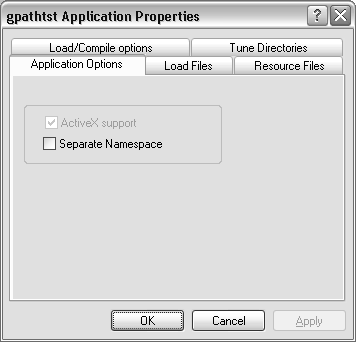VLISP allows you to change the way your application is designed. For example, you can change compilation options, or add or remove AutoLISP files from the application.
To change an application's definition
 Make
Application
Make
Application  Existing Application Properties. VLISP displays
a dialog box for you to specify your application's Make (.prv)
file, which is where VLISP stores the application's properties.
Existing Application Properties. VLISP displays
a dialog box for you to specify your application's Make (.prv)
file, which is where VLISP stores the application's properties.

Identify LISP Object directory and Target directory. The Object directory is where VLISP places .fas and temporary files created by the compiler. Target directory is another name for “Application directory,” which is where Make Application stores the VLX file. If a field identifying a directory is blank, VLISP uses the .prv directory.